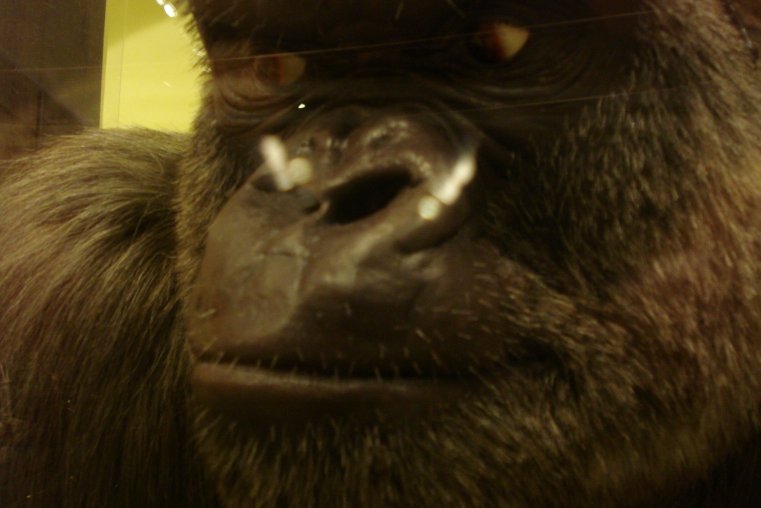
I spent a lot of time at the Milwaukee Museum as a kid. It was a big part of my education and many of the images have stuck with me, so I was happy to see significant continuity in the exhibits. The familiar animals stare out of their dioramas. I went down to the museum with my sister and saw the old friends.
The one that stuck in my mind the most was the cougar, frozen in time about to jump on a couple of mule deer. When I hike in the west, in places where there is a resurgent cougar population, I think about that image and unfortunately cast myself in the role of the deer. The cougar is a stealth hunter. He is literally digging his claws on your back before you are aware of his presence.
Cougars were once common throughout North America. Our ancestors wisely drove them out to the lonely places of the continent and I am unenthusiastic about their return to settled areas. I understand that there is an established population now in the Black Hills and sooner or later some fool will reintroduce them to the Appalachians, whence they will infiltrate into place where I walk. I know they are beautiful and graceful, but I don’t favor any animal sharing the forest with me that can easily kill me and might have incentive to try. I don’t believe, as some deep green environmentalists imply, that it would be ennobling for me to become “one with nature” by becoming big cat food and ultimately being converted to cougar sh*t.
I am indeed a “speciesist” in this sense. I want to stay at the apex of the food pyramid. Let big, dangerous cats stay in the North Cascades or other special ranges where we can be on the lookout for them. It has been more than a century since any of their kind snarled their defiance in the Eastern Mountains. Good. Let’s keep it that way.
I have no similar problem with wolves, BTW. Little Red Riding Hood notwithstanding, they may be a threat to livestock, but just don’t attack people. At least they have not done so in North America in our 400 years of reliable record-keeping. The wolf has suffered mightily from bad public relations. In Europe, where they lived in intimate contact with dispersed and technologically less sophisticated human populations I suppose they may have been a threat on occasion, but not here and now.
So to sum up in simple terms, IMO, MOST carnivores – wolves, coyotes, bobcats, lynx, fishers, martens, badgers and such like are good and should be encouraged on your land unless you have livestock or small pets that might be endangered. Large bears and – especially – cougars are bad anywhere near where you want to live, hike or take a nap.

Above is “Sambo”. He was a gorilla in the Milwaukee Zoo. He died back in 1959 (I think of lung disease) and soon appeared in the Museum as the “lowland gorilla”. I never saw Sambo alive, but got to know him in the flesh, so to speak, later. Below is “Sampson”. He was Sambo’s zoo-mate (I think he might have been his brother), but lived a lot longer. Sampson died in 1981 of a massive heart attack. He was evidently overweight. I don’t recall if he smoked or didn’t exercise. He was one of the most popular residents of the zoo, with a lot of mourning fans when he died. Now he also stands in the museum. My own goal, BTW, is to become a museum exhibit someday. They can make a diorama with me as a character.

